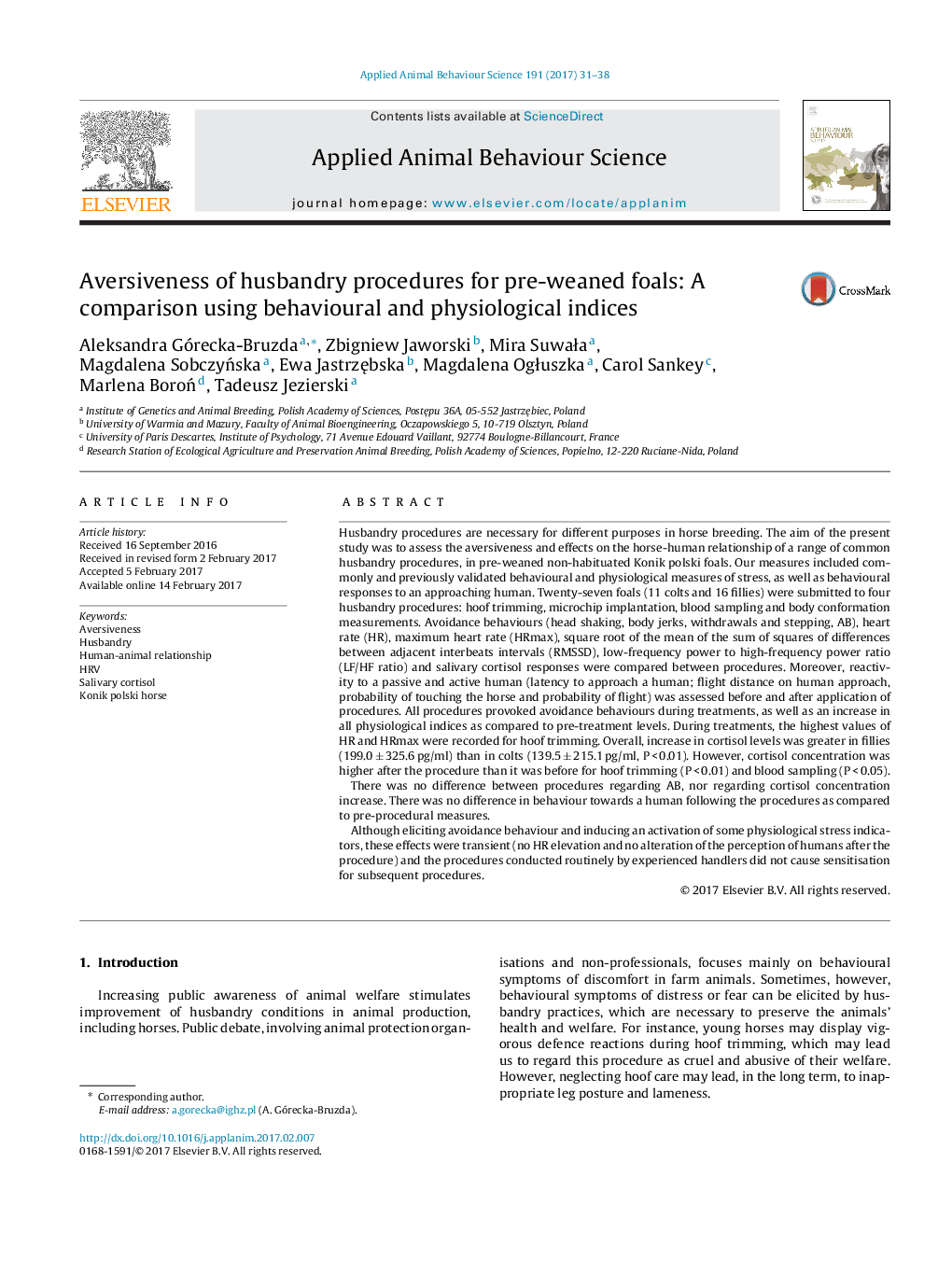| کد مقاله | کد نشریه | سال انتشار | مقاله انگلیسی | نسخه تمام متن |
|---|---|---|---|---|
| 5763419 | 1625315 | 2017 | 8 صفحه PDF | دانلود رایگان |
- The aim was to determine the aversiveness of husbandry procedures applied to foals.
- Avoidance behaviours, HR, HRV and cortisol level were compared between procedures.
- All procedures provoked avoidance and an increase in all physiological indices.
- Activation of cardiac parameters did not last after the treatment.
- No change in the reaction towards humans after the procedures was observed.
Husbandry procedures are necessary for different purposes in horse breeding. The aim of the present study was to assess the aversiveness and effects on the horse-human relationship of a range of common husbandry procedures, in pre-weaned non-habituated Konik polski foals. Our measures included commonly and previously validated behavioural and physiological measures of stress, as well as behavioural responses to an approaching human. Twenty-seven foals (11 colts and 16 fillies) were submitted to four husbandry procedures: hoof trimming, microchip implantation, blood sampling and body conformation measurements. Avoidance behaviours (head shaking, body jerks, withdrawals and stepping, AB), heart rate (HR), maximum heart rate (HRmax), square root of the mean of the sum of squares of differences between adjacent interbeats intervals (RMSSD), low-frequency power to high-frequency power ratio (LF/HF ratio) and salivary cortisol responses were compared between procedures. Moreover, reactivity to a passive and active human (latency to approach a human; flight distance on human approach, probability of touching the horse and probability of flight) was assessed before and after application of procedures. All procedures provoked avoidance behaviours during treatments, as well as an increase in all physiological indices as compared to pre-treatment levels. During treatments, the highest values of HR and HRmax were recorded for hoof trimming. Overall, increase in cortisol levels was greater in fillies (199.0 ± 325.6 pg/ml) than in colts (139.5 ± 215.1 pg/ml, P < 0.01). However, cortisol concentration was higher after the procedure than it was before for hoof trimming (P < 0.01) and blood sampling (P < 0.05).There was no difference between procedures regarding AB, nor regarding cortisol concentration increase. There was no difference in behaviour towards a human following the procedures as compared to pre-procedural measures.Although eliciting avoidance behaviour and inducing an activation of some physiological stress indicators, these effects were transient (no HR elevation and no alteration of the perception of humans after the procedure) and the procedures conducted routinely by experienced handlers did not cause sensitisation for subsequent procedures.
Journal: Applied Animal Behaviour Science - Volume 191, June 2017, Pages 31-38
